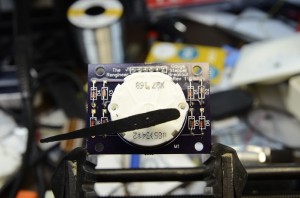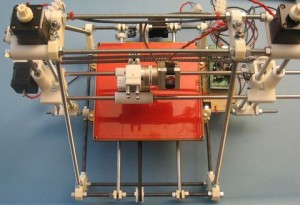I missed getting a blog entry up last week due to the fact that I was a. at the AUVSI Symposium in Washington DC. AUVSI stands for Association for Unmanned Vehicle Systems International. For the uninitiated, AUVSI covers ground, sea, underwater, and air based unmanned “drones”. They may be remotely controlled, Autonomous, or a combination of the two.
As a veteran of numerous trade shows, I always start a show with mixed feelings. On one hand I’m excited to see the new technology. On the other hand I’m always trying to determine what is
fact and what is marketing hype. Anyone who has worked a trade show as an engineer can tell stories about how they showed products that were not quite ready for prime time.
I spent a lot of time in the conference Portion of AUVSI. Lots of ½ hour meetings about various issues in the industry. What I found in those meetings was an interesting case of Arrested (or postponed) development. It also happens to be one that I have a bit of a history with.
(Call in the Wayback machine!)
Way back in 2004 digital cameras were finally becoming light and cheap enough to fly on model aircraft. Add to this the perfect storm of electric models coming of age (due to battery and motor advances) and light, cheap video down links. Myself and numerous others saw the opportunity for a new business: aerial photography from radio controlled model planes.
I was able to quickly get a system together, and over time refined it to something that could produce professional results.
It wasn’t long before I had a few jobs with local construction companies. I would take Progress Photos of large construction sites every two weeks. I started getting more and more calls,. and things got to the point where I had to decide if I wanted to continue in engineering, or jump over to this new career as a professional aerial photographer. Just as I was about to jump, a low rumble came out of Washington. The FAA had decided that radio controlled aircraft, when operated on a for pay basis. were in fact drones. This placed RC planes under the regulation for unmanned aerial vehicle systems. At the time there was no true regulation in place. The FAA made it clear that rules were coming. In my case this made the decision easy. I stuck with my 9-5 rather than risk having the proverbial rug pulled out from under me. It turned out to be a good decision, as RC Planes (again only when operated for business) fell under these some stiff regulations. This more or less killed the RC aerial photography industry as a legal venture.
Stepping out of the wayback machine, and back to late 2011, quite a bit has changed. UAVs both small and large have helped our nation tremendously in the defense sector. They’ve also done quite a bit of work in search and rescue. However, the FAA still hasn’t even released a timeline for incorporating UAVs into the national airspace. There has been quite a bit of talk, but very little movement.
The military is a special case here. They have their own restricted airspace over bases to perform testing and training. Public entities such as NASA also have some special treatment. The private sector however, is stuck. Even the quadcopters that many of us build and fly for fun would be illegal to fly as a service.
Now don’t get me wrong. Airspace integration is a very difficult prospect. The last thing anyone wants is to have a mid air collision between a UAV and a passenger plane.
So while I am as frustrated as the rest of the crowd, I don’t have a definite answer.
What do you think?
 I put my second product up on tindie.com as a fundraiser. It’s a breakout board for one can use to make custom Analog style gauges. The actual drive is a stepper motor – the same model used in GM cars and trucks. The breakout uses an arduino library written by Guy Carpenter, who has a great blog over at http://guy.carpenter.id.au/gaugette/
I put my second product up on tindie.com as a fundraiser. It’s a breakout board for one can use to make custom Analog style gauges. The actual drive is a stepper motor – the same model used in GM cars and trucks. The breakout uses an arduino library written by Guy Carpenter, who has a great blog over at http://guy.carpenter.id.au/gaugette/


